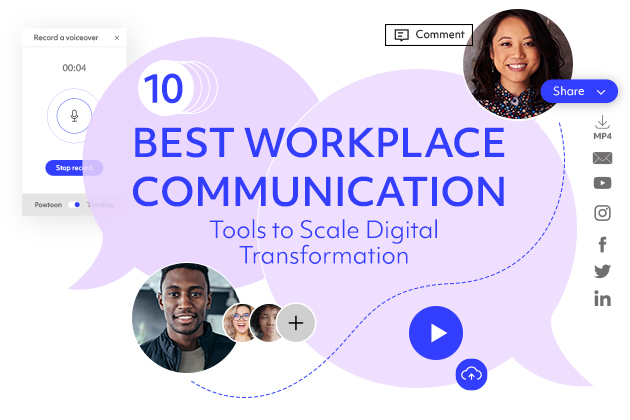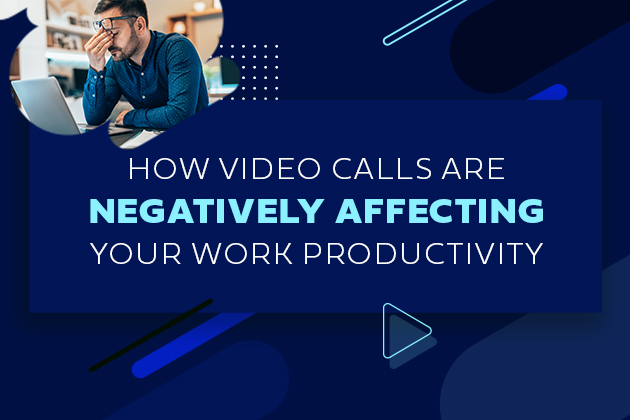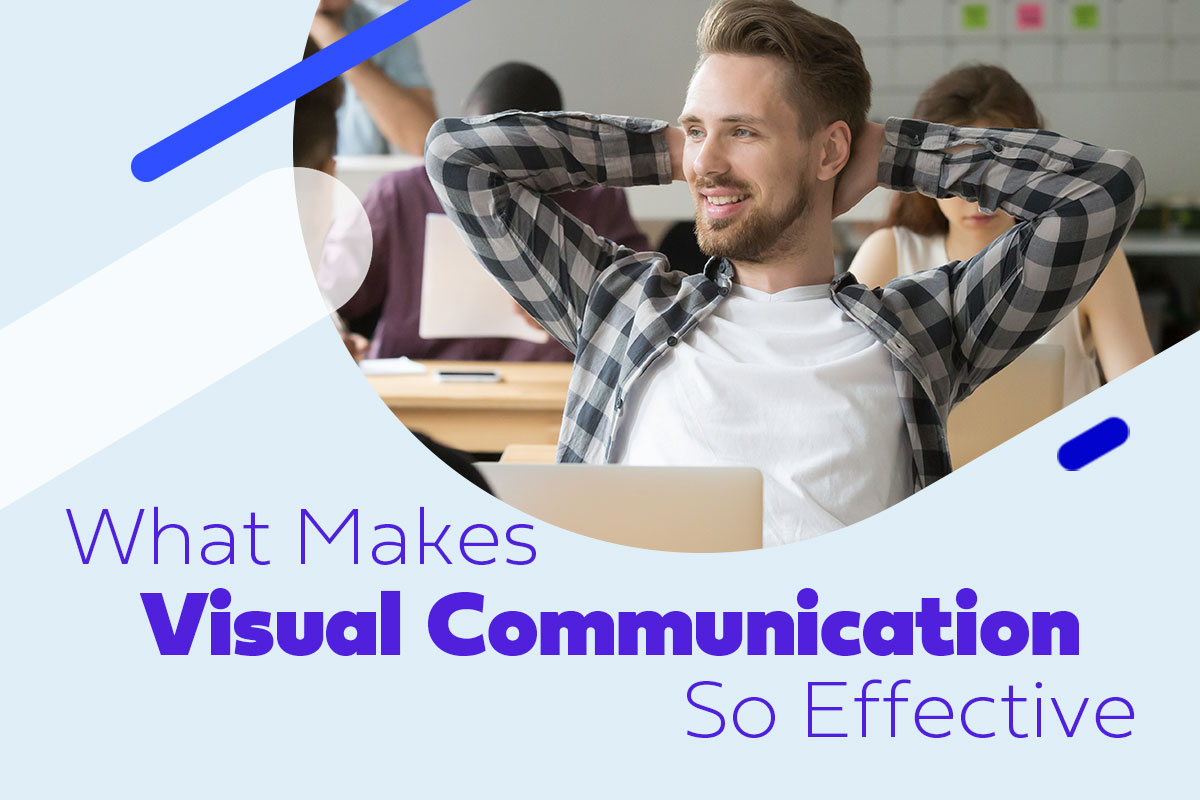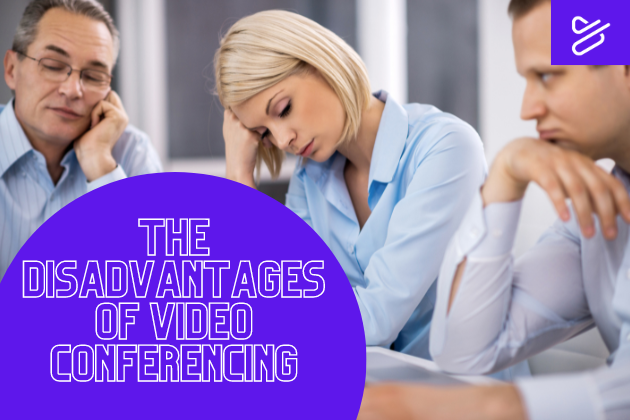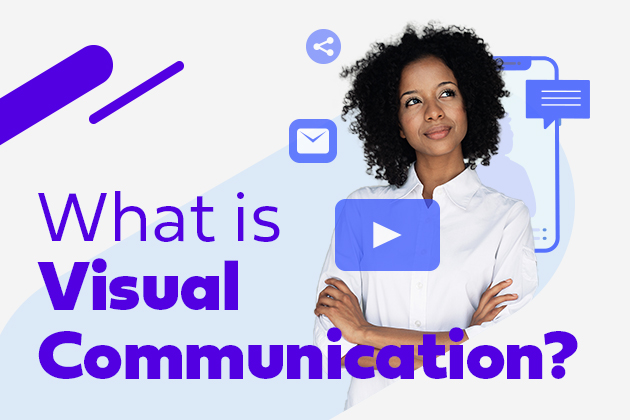
What Is Visual Communication?
Visual communication is the visual transmission of ideas and information through video, animation, images, GIFs, and other visual media.
Visual communication has proven to be a more effective way to organize important information and share it with your audience (whether that’s coworkers, team members, or external clients). This article takes a deeper look at the definition and history of visual communication, as well as its relevance to businesses and organizations of all sizes.
Since 65% of your workforce are visual learners, it’s no wonder the business world is calling for a platform powered by strong collaboration and pro-level design capabilities, to support the creation and distribution of effective visual communication.
Just to be sure we are all on the same page. When we say, “Visual Communication” we are referring to the following:
- Print, digital, static, and video marketing & sales content
- Internal communications delivered visually
- Data visualization
- Illustrated, animated, or video how-to guides
- Posters
- GIFs
- Memes
- Live & recorded presentations
- Online conferences & events
- Training videos
- Live social media videos
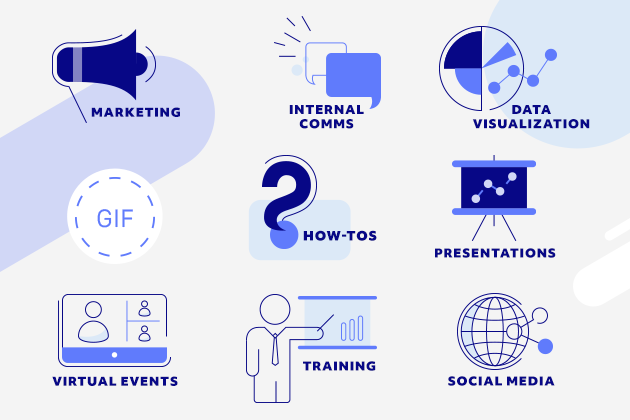
There are a number of benefits of visual communication, but here are some of the most important ones. With visual communication you will be able to:
- Break through the digital noise & capture attention
- Bring visual order to confusing information
- Clarify the most important ideas
- Make personal connections, even at a distance
- Formats & platforms are optimized to share visual content
- Images, animation, and video make a deeper impact than text alone
- Tell a more powerful story
Traditional means of communication are breaking down as work, school, and play are moving online. In today’s globalized and virtual world, everything starts and ends with visual communication experiences. Organizations looking to set themselves apart are embracing visual communication. As a result they are creating experiences people enjoy while also delivering the right message, which is hard for many companies to achieve.
Why Communication Is Broken Today
The amount of information we deal with each day is astounding. Just look at the numbers.
A person receives an average of 94 texts per day, and in the last decade alone, the use of SMS has grown by 7,700%. That means that about 560 billion texts are sent around the world daily.
The average employee gets about 120 emails per day, with a response rate of between 5% to 25% on average. Despite the low response rate, employees spend about 2.6 hours per day in their email inboxes, going back to check them on average every 37 minutes.
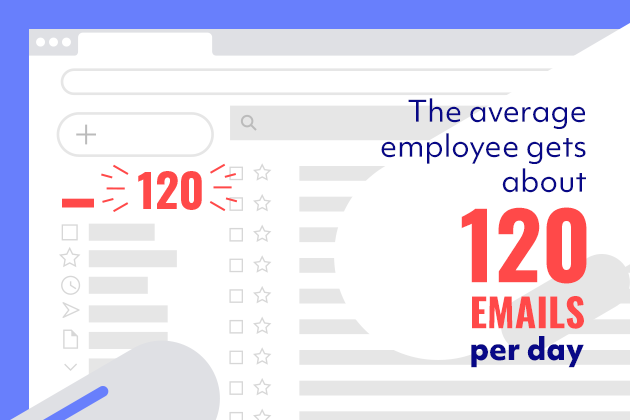
In addition to personal and professional communication, the average pair of eyes unconsciously sees up to 10,000 ads per day. This is up from 5,000 ads just a year ago.
In other words, everyone is overwhelmed, and looking for ways to:
- Break through the noise
- Work remotely without a miscommunication nightmare
- Present messages in a way that actually gets them consumed
- Achieve the goals of your communication
This is where visual communication comes in. By leveraging multiple types of visual content, like video, presentations, images/GIFs, animation, etc., you can convey your message in a more powerful way.
To understand exactly how we got to this point, and how to actually benefit from visual communication, it’s important to review its evolution through the ages.
A Brief History of Visual Communication
Communicating visually isn’t new to humans. From cave paintings to the printing press, all the way through television and the World Wide Web, we’ve been on a quest to make communication more visual, more personal, and more instantaneous.
For businesses, the last 20 years brought us the cumbersome Learning Management System (LMS). Complicated software that could deliver course content online. While this model worked well for some organizations, as technology has evolved, the LMS morphed into the Learning Experience Platform (LXP).
While the name may have changed, the actual experience has not. A platform that only serves one department or situation can actually get in the way of serving timely, valuable information to your colleagues.
Fast forward just a bit and we find ourselves in the mobile revolution. Going mobile and the creation of social media platforms has only accelerated this phenomenon like no one could have predicted. Cisco notes over 70% of the world’s population will be connected via mobile device by 2023. The rise of mobile-first image and video-heavy platforms like Snapchat, TikTok, and Instagram seem unstoppable, and changing the way we connect with friends, colleagues, causes, and communities.
It isn’t just the technology that’s found its way into the workplace. Younger Millennials and GenZs who have grown up using GIFs, images, and emojis make up a bigger share of the workforce by the day.
Today, we have instant connection with anyone, anywhere. We have generations with vastly different technological capabilities and communication styles, all working together. And we have an untold number of tools, with more launching every day, to create visual content.
But somehow, we remain overwhelmed, and true connection and communication seems even farther from our grasp.
Humanity Is Still Buffering
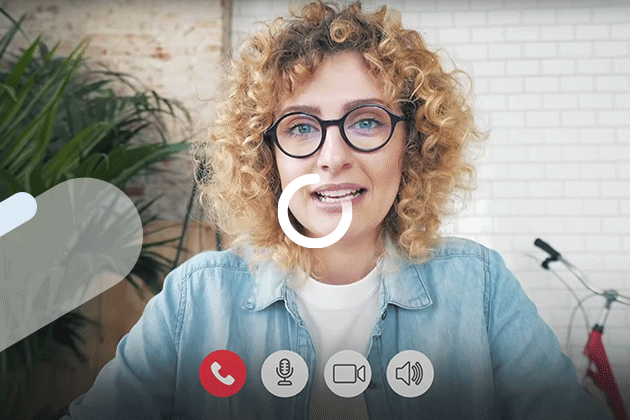
With all these changes, humans still process information the same way. The question is, are we giving our teams the tools they need to understand our message clearly? Or are we being carried away with over-communication, blind to the overabundance of screens, ads, emails, notifications, dings, and pings?
For the average human, the overload becomes stifling. For employees, constant distraction and unessential information slows down productivity and focus. In a company, thousands of messages get lost in translation.
So as organizations, we must ask ourselves, how can we keep evolving our communication styles to improve our connectivity, as opposed to feeling overwhelmed or disengaged?
For those with crucial messages to communicate, how can we reach an oversaturated audience amidst the media madness in an effective, efficient, and engaging way?
Approaching Communication Visually — The Next Evolution
It’s time to transform everyday communication into more than senseless grunts, text overload, or pretty, yet overwhelming images, messages, and notification.
The next evolution of human communication calls for engaging with memorable experiences that actually create connection and deliver value. We must press pause on the need to communicate more, and instead, focus on the need to communicate more effectively.
It’s no longer enough to write an article, make a spreadsheet, or send an email. With an onslaught of incoming information, consumers and employees simply cannot consume it all.
We have what to learn from what our ancestors used for so many millennia before use and embrace the art of storytelling.
Why Is Visual Storytelling So Powerful?
The power of visual storytelling rests in the delivery and comprehension of a message. If we think about it, the story is the oldest form of content. It works because it’s a memorable and impactful way to deliver a message, or a moral. It‘s easily relatable, entertaining, and engaging. It’s a key tool for evoking emotion – and in a world living in somewhat self-isolation, we need as much connection as we can get.
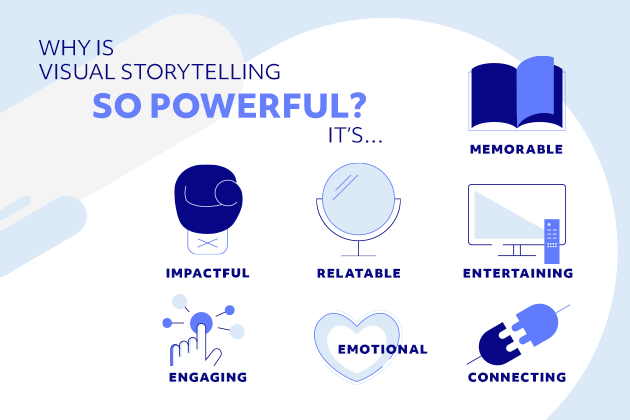
Visual storytelling in the workplace takes this deeply human approach to delivering an important message to your audience, and uses state of the art technology and channels to engage and connect.
The difference between a visual communication platform and just another online content creation tool is in the approach which honors how we relay messages and how we receive messages — inviting a refreshing connection between creator and consumer.
In fact, it changes the passive consumer to an active “engager.”
Communicate Differently
The next wave of innovation is the intermingling of technology to support a more valuable form of communication, and so content, in terms of creation, delivery, and engagement.
Should we be surprised? After thousands of years spent grunting, we can acknowledge that our history speaks for itself. And that our future may only flourish with a more refined, essential, and effective approach to how we connect.
Of course, this is only just the beginning.

